With: Ferrino By: Silvia Galliani
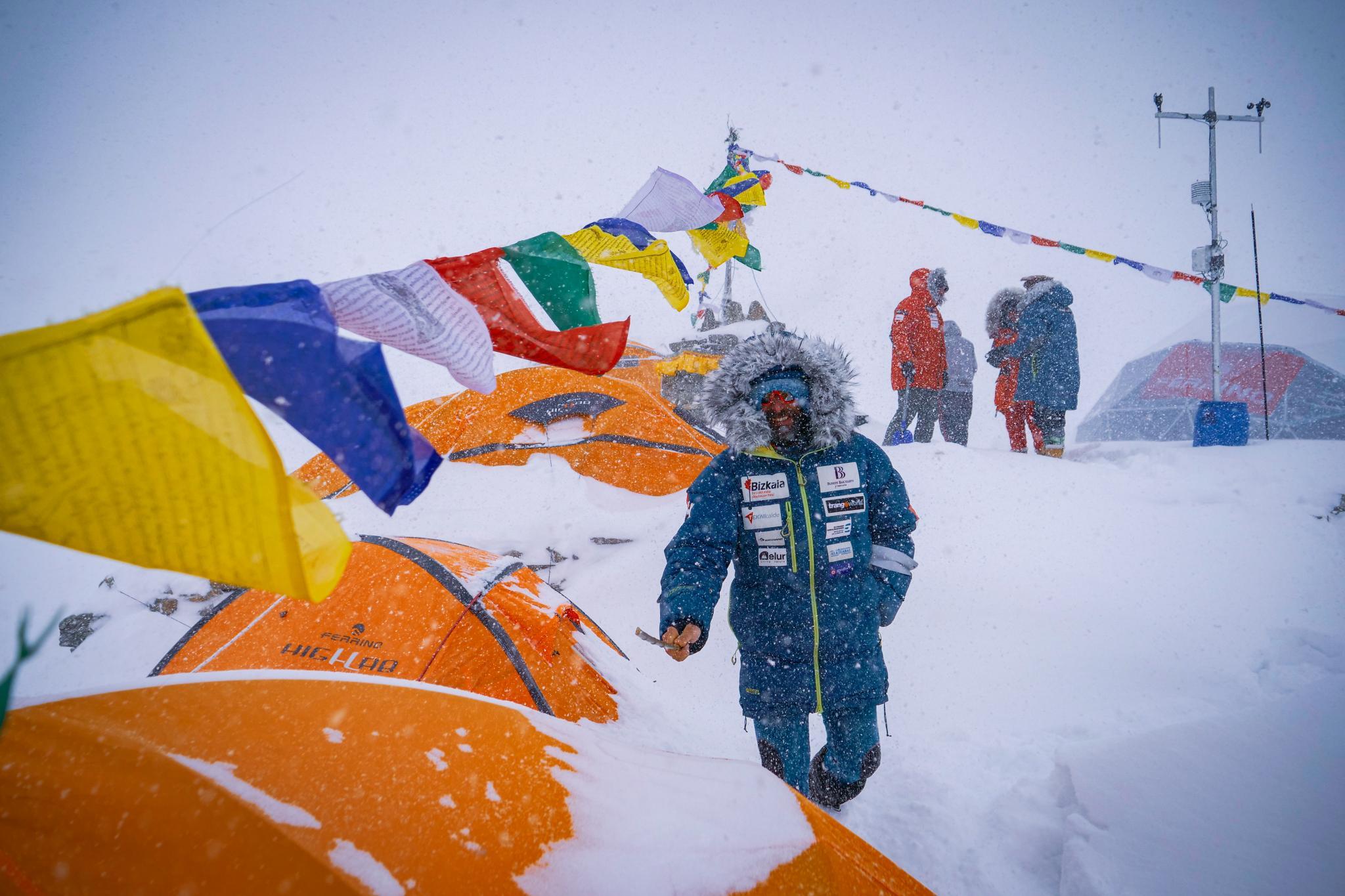
Alex Txikon’s Manaslu
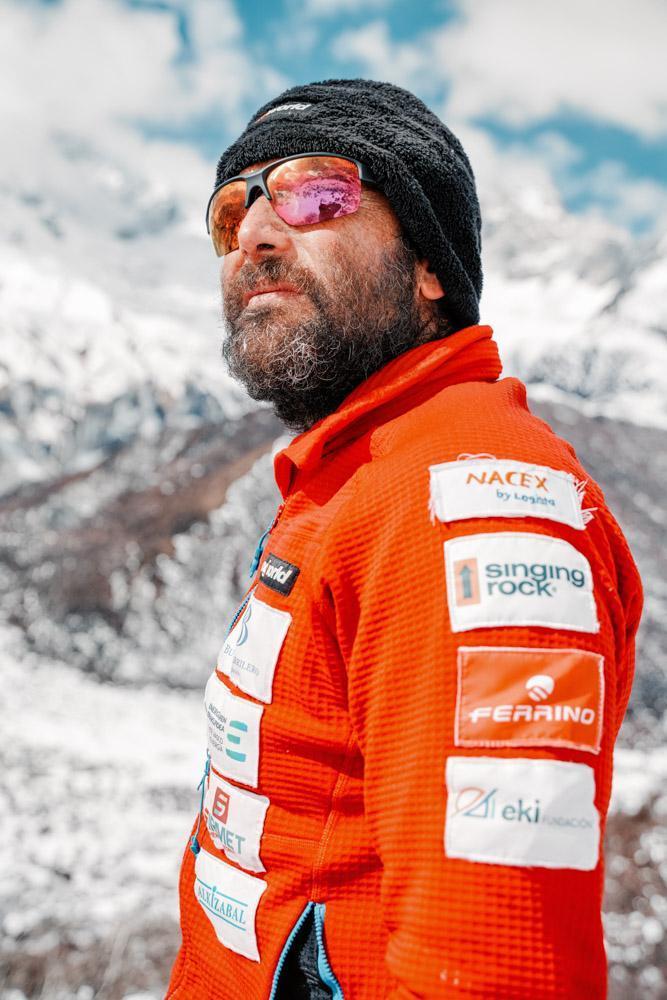
It is a pleasant late winter evening. The air is beginning to warm and the days are gradually getting longer. It is March 17 and we are in Brescia, specifically at DF Sport Specialist at the Nuovo Flaminia Shopping Center, to meet with none other than Alex Txikon.
The evening, sponsored by Ferrino, is part of a series called “Face to Face with the Greats of Sport,” a series of events conceived by DF Sport Specialist in 2005, which aims to tell the fascinating world of the mountains and beyond through its protagonists. In fact, Sergio Longoni, president of DF Sport Specialist, has given life to several evenings that have also seen cycling, running and swimming champions on stage, as well as explorers of the most inaccessible and distant territories. Home-grown athletes but also international guests: life testimonies and accounts of their sporting experiences created moments of great excitement and involvement for the audience, arousing anticipation and curiosity for the next event.
Tonight, however, in the spotlight will be the turn of the Basque athlete and Ferrino ambassador who, in front of a large audience, will recount the winter expedition that took him to the top of Manaslu last January 6.
It was the third attempt for Txikon who reached the summit at 8163 meters in winter and without the use of oxygen tanks. With him on the highest point Pasang Nurbu Sherpa, Gelu Sherpa, Maila Sherpa, Mantere Lama Sherpa, Gamje Babu Sherpa and Chepal Sherpa. This is the first full winter ascent of Manaslu, made according to modern winter expedition standards: arrival at base camp after the winter solstice (Dec. 21). Also with Txikon was Simone Moro, who had to drop out due to health problems. Together they had climbed Nanga Parbat in 2016, the first time in winter. The conquest of Manaslu for Alex Txikon and his Nepalese companions represents the first ascent made entirely in winter and the second in the coldest season since that made in 1984 by Poles Maciej Berbeka and Ryszard Gajewski, who began the expedition in autumn, however. Txikon and companions completed ascent and descent in less than 60 hours, a record time for climbing an 8000-meter peak in winter.
We had a chance to chat with Alex before the evening that featured him, here’s what he had to say!
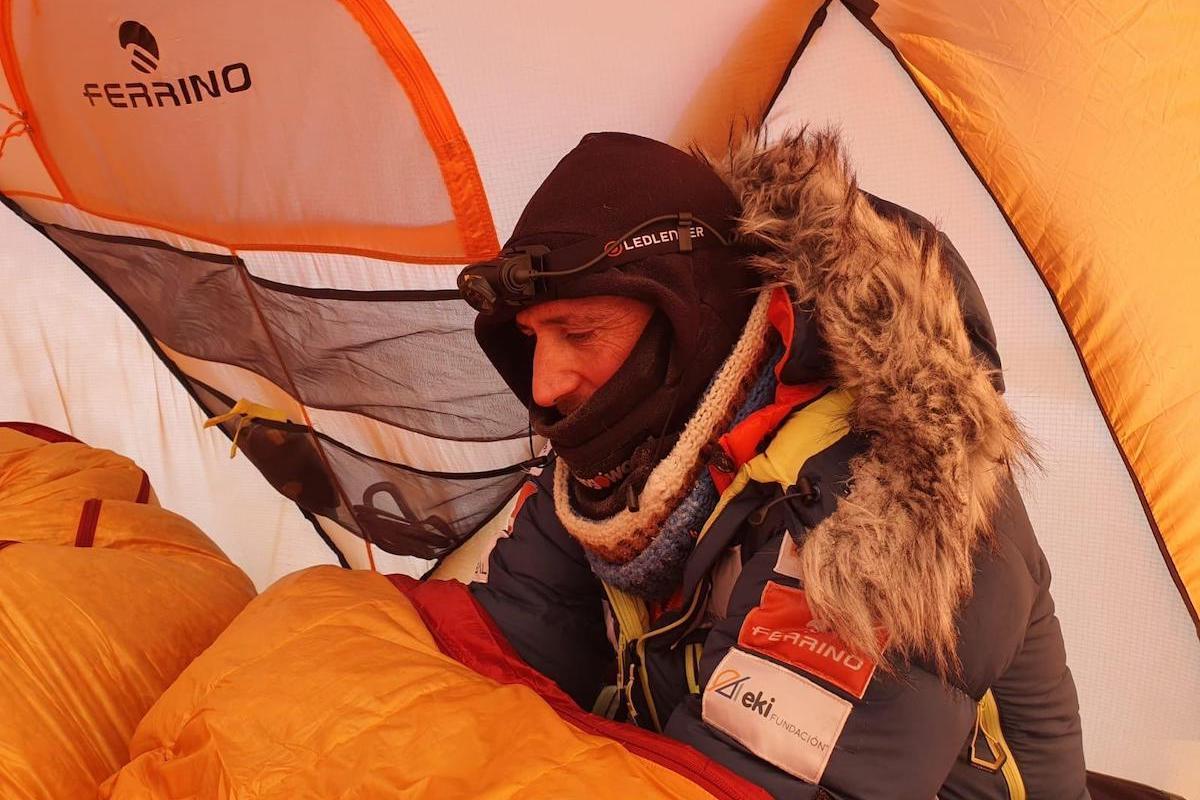
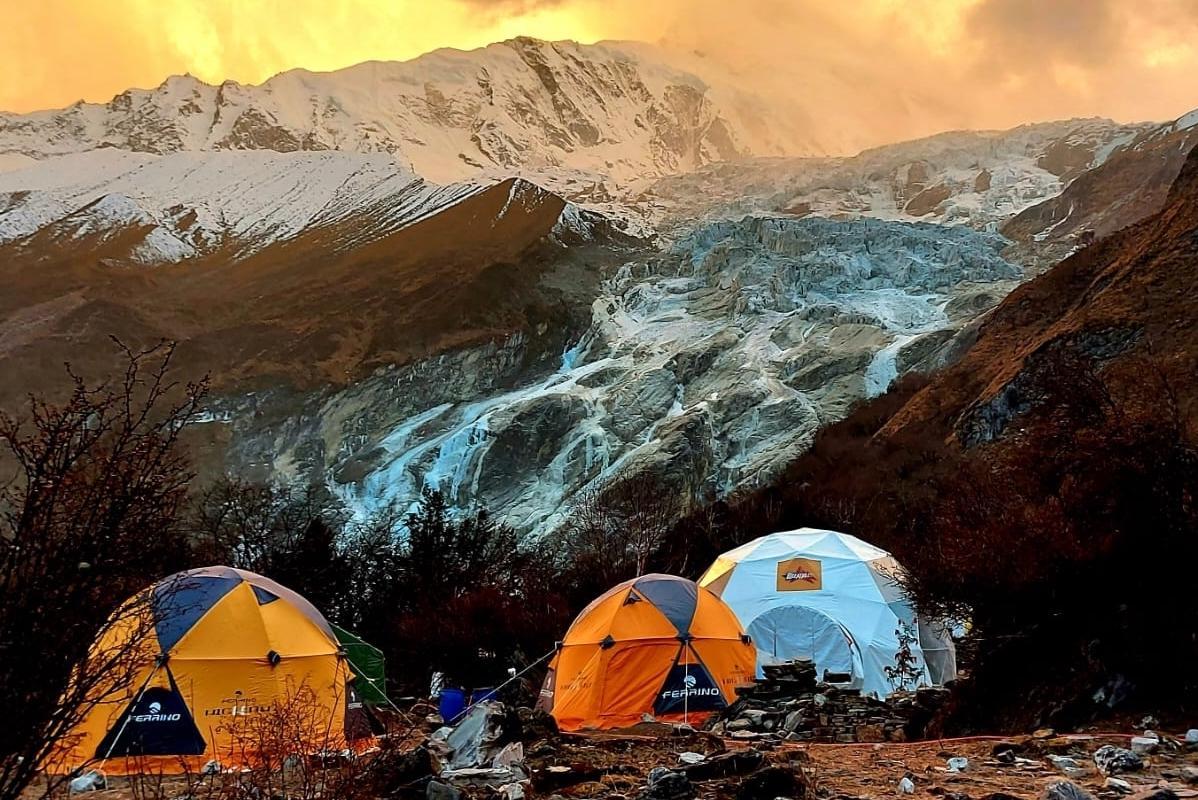
Hi Alex, can you tell us how was your ascent of Manaslu?
I set off for Nepal together with Simone Moro, on his fifth attempt on winter Manaslu and third for me. Together with him and the whole team, we worked to prepare the route up the mountain by setting up camps, fixing fixed ropes and choosing the best route up. At the first window of useful time and after setting up base camp, at about 5,000 meters, we started to climb. On January 4, we arrived at Camp 2, overcoming 1,500 meters of elevation gain. During this climb Simone Moro unfortunately had a health problem and rightly chose to retrace his steps alone. Meanwhile, we, on January 5, continued to Camp 3, positioned this year just below 7,000 meters, where we decided to try to make the most of the weather window. And after three years of trial and error and sacrifice, we finally reached the summit, exactly at 9:30 a.m. local time on January 6. It was one of the toughest and most dangerous experiences of my professional career and required us to have incredible physical and mental strength. Especially in the first part, the mountain was in worse condition than I thought. Temperatures dropped to -45º and wind gusts reached 50km per hour. It’s hard for people to get an idea of what these conditions are like: even the water from the water bottles we carried between our chests and the down suit was freezing, something that had never happened to me before!
Who was the team you reached the summit with?
Along with me was a group of six Nepalese mountaineers, plus two more Nepalese at base camp at 4850 meters and an additional three people at 3700 meters. In addition, my six Nepalese companions have a fairly wide network of acquaintances with whom they exchanged information and advice. Then there is the whole group that deals with social media and press releases. It is quite a large network of people who have collaborated together in the realization of this undertaking. Among the seven of us, everyone had his or her own opinion, which was listened to and evaluated, and we all decided together what to do.
Ferrino has long been alongside your expeditions, what products did you use for the Manaslu ascent?
We used the model tents South Hill At base camp, and the high altitude tents Sbowbound 3 for the high fields: two flagship products of the Ferrino HighLab line, which, thanks to constant research, testing and development work, ensures continuous improvement of equipment, optimizing very high performance even in the conditions of the‘Himalayas in winter, with high winds, heavy snowfall, and temperatures several degrees below zero. As for backpacks, on the other hand, we had those from the Instinct line, which are ultralight and constructed of Dyneema Composite Fabric, Cordura Nylon and SuperFabric reinforcements to ensure an optimal ratio of strength to lightness.
What has this adventure on Manaslu taught you?
First of all, to listen to myself and to listen to the mountain. To give myself time to make decisions because in the mountains you need to be patient and you need to be able to learn from your mistakes.
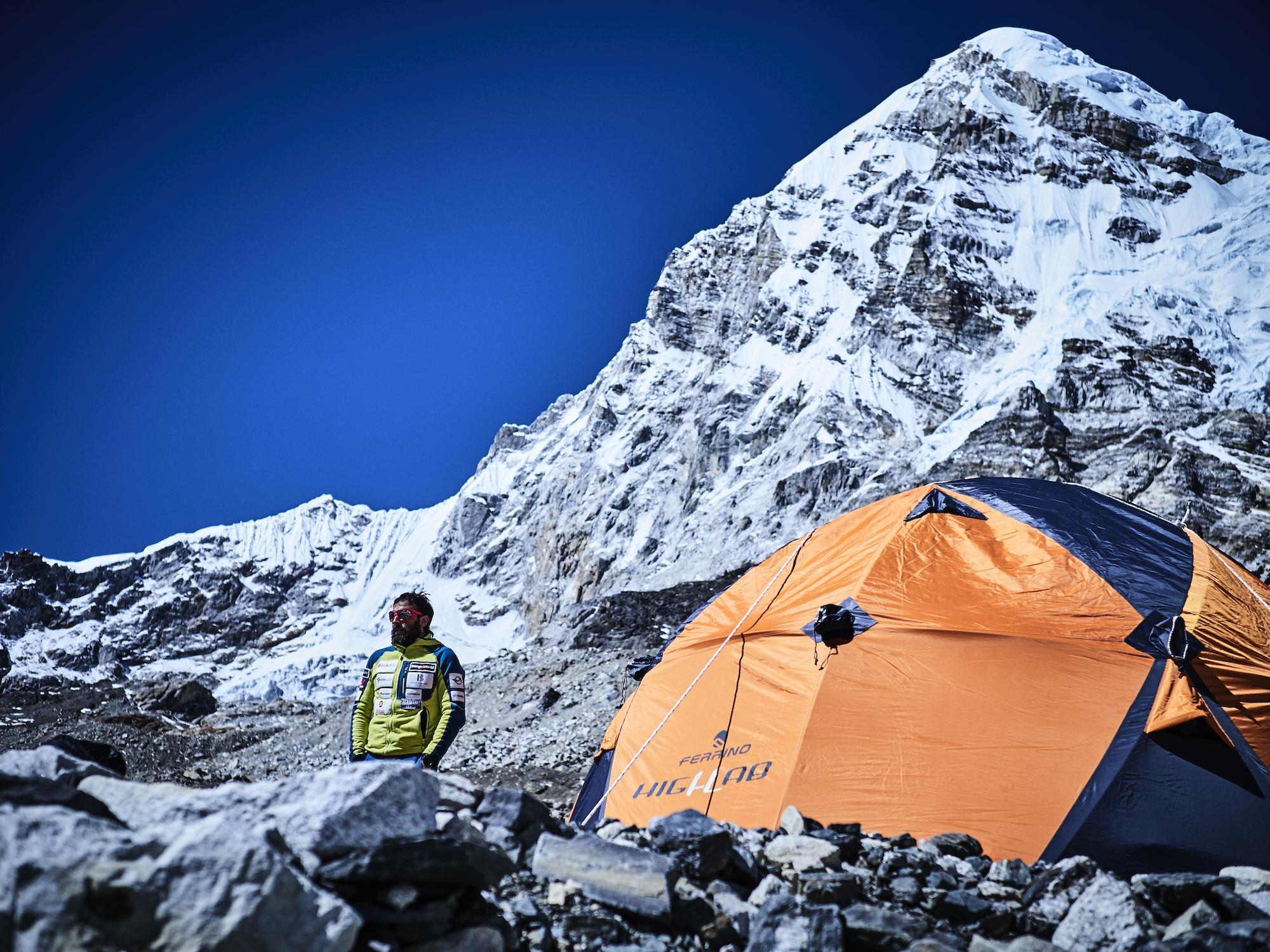
Is there any anecdote or moments you would like to remember and share?
Everyone thinks that the best moments, the ones to remember, are experienced at the summit. But I don’t remember much of that moment, what I remember instead are the moments when we had fun, the moments we lived with the local people, with the children. Or when we were in a monastery in Samagaun drinking terrible Tibetan tea or sharing lunch with people in the village. These are local people who are still authentic despite the tourism that is slowly changing these balances anyway, so I think it is important to remember and highlight these moments.
There is a lot of talk about sustainability in the mountains. How do you approach this important issue?
For me, sustainability comes in two aspects. One relates to education: in fact, we support the Udana Association, which covers the educational expenses of 20 girls who come from remote areas of Nepal with the goal that they will then return to their villages bringing the skills they will have acquired as teachers, schoolteachers, doctors, and nurses. On the energy sustainability side, however, we are part of Fundación Eki, which has created more than 70 photovoltaic installations in sub-Saharan Africa, 2 in Nepal and 1 in Pakistan. Energy is progress: we brought a projector to a school in Pakistan, and when children see a film for the first time they realize there is a whole world beyond what they know. Finally, if we talk about sustainability during expeditions, we always recycle waste at base camp, try to take as little packaging with us as possible, and even with organic waste, we always try to bring everything back downstream. Urine is problematic because there is the problem of contamination of waterways that reach the villages, so care must be taken. We also try to clean up the mountain not only of our waste but of everything we find on our way.
Future plans? Are you planning to leave for the Himalayas right away?
I try to live life day by day and always be present to myself. Real life is here, not in the Himalayas, despite that sometimes Alex Txikon absorbs Alex and I feel constant pressure, but I always have to remind myself that I am Alex, not Alex Txikon. I think you have to live every day to the fullest. Mountaineering for me is not a job but a passion, but if I thought only about that I would not be able to enjoy the present and what happens to me when I am not in the Himalayas. Climbing in the mountains back home also makes me happy because the mountains are my life.
